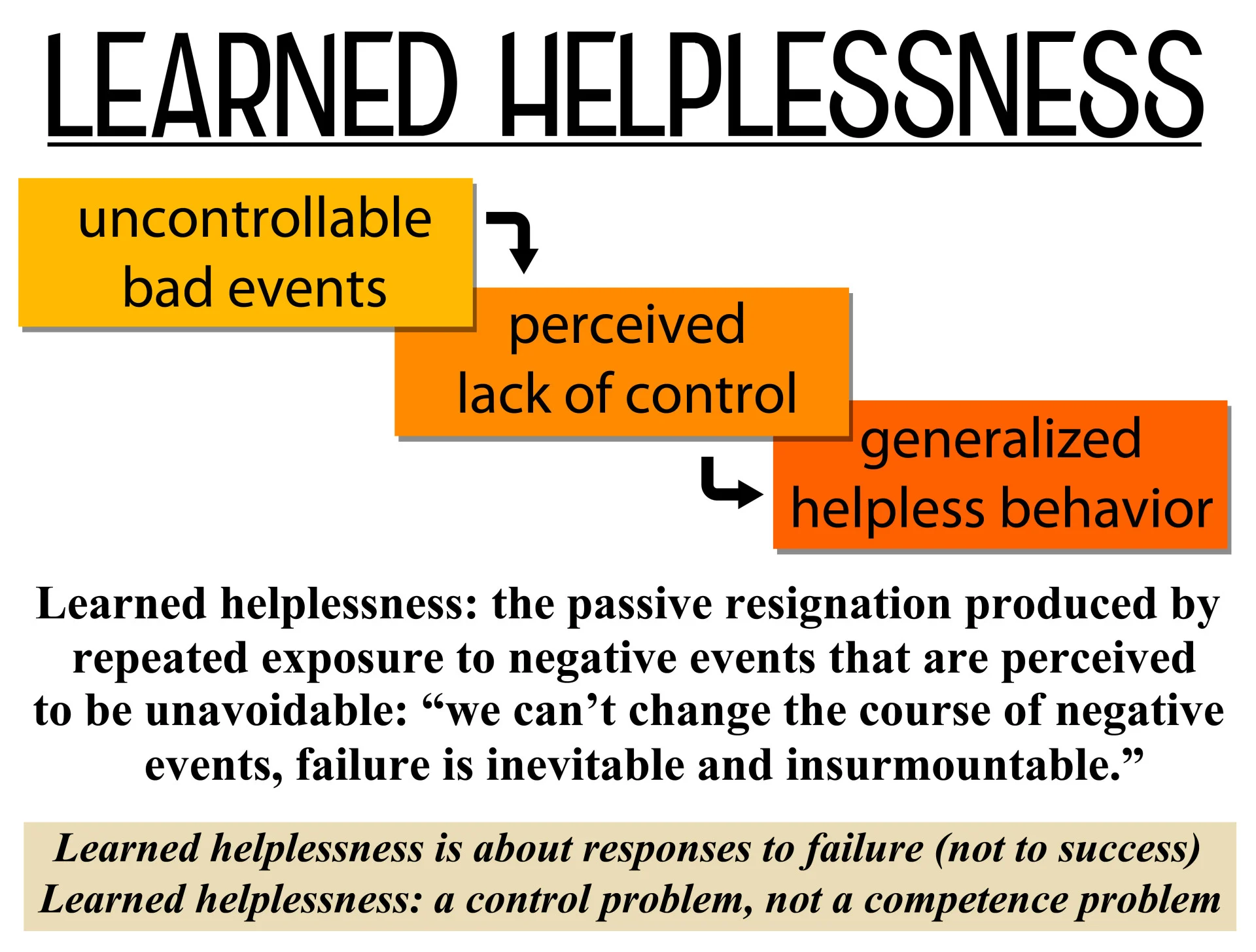Learned helplessness is the belief that one cannot do anything in a situation because trying to act consistently failed to work in the past. It’s giving up instead of trying to change the situation because you believe that nothing will change it, even if something potentially could.
The antidote is to start doing something even if it seems pointless, and to keep doing things. It won’t feel like it matters at first; do it anyway. You have to learn that your situation can change because of your own effort. By doing something, you’re teaching yourself that your choices matter and that you can make a difference in your own life. Do things that are within your control and notice the results.

Martin Seligman conducted a series of classic experiments in the 1960s (Seligman & Maier, 1967). Some dogs were placed in a chamber where they received electric shocks from which they could not escape (the non-escape condition). The dogs in the escape group could escape the shocks by pressing a panel with their nose.
In the second phase, the animals were placed in a shuttle box divided by a barrier in the middle so that the dogs could jump in order to escape the shocks. Only the dogs that had learned to escape in the previous phase tried to jump. The other dogs did not.
When the dogs in the “non-escape” condition were given the opportunity to escape the shocks by jumping across a partition, most failed even to try; they seemed just to give up and passively accept any shocks the experimenters chose to administer.
In comparison, dogs who were previously allowed to escape the shocks tended to jump the partition and escape the pain.
Martin Seligman, the psychologist who first described learned helplessness, identified three main features that characterize this behavior:
- Lack of motivation: When faced with new challenges or difficult situations, people with learned helplessness often fail to respond or even try. They feel like giving up before they start and have a low tolerance for even the smallest bumps in the road.
- Difficulty learning from success: Even when people with learned helplessness manage to cope with a situation successfully, they have trouble learning from that experience. They don’t see their success as a sign that they can handle similar challenges in the future.
- Emotional numbness: People with learned helplessness may seem less affected by painful or stressful events. They might appear to be emotionally flat or unresponsive.
However, later research found that even though people with learned helplessness might seem emotionally numb on the outside, they are actually experiencing high levels of stress on the inside.
I know you are scared. Mom is the Devil You Know, and when you see yourself the warped mirrors of her eyes it’s hard to imagine anything else. What if the outside world is even worse? If she catches you trying to climb out the window, she will try to convince you that you can’t handle it. Or she’ll have some kind of crisis and “need” your help. Or she’ll tell you that you can’t leave your Dad and brother and enlist them to help her guilt you into staying. She will say anything to make you stay – remember, you’re her audience!
It’s a trap. Do you see the part where it’s a trap?
Listen: In the future, there is a small, quiet room that is just yours, where you are safe and you are free. In that room your shoulders will finally start to come down from around your ears. Nobody can come into that room unless you let them. In that clean quiet place, you will work and you will study. You will love and you will heal. I know this is true because I am there with you. We are there together because you saved us. You saved us because you were brave and because you never stopped believing in that room.
See you there,
Your Future Self
Captain Awkward, Question #122: Should I move away from my abusive family?, 2021
See also: Refusal To Act Is Still A Choice, You Are Not Trapped, Do Something